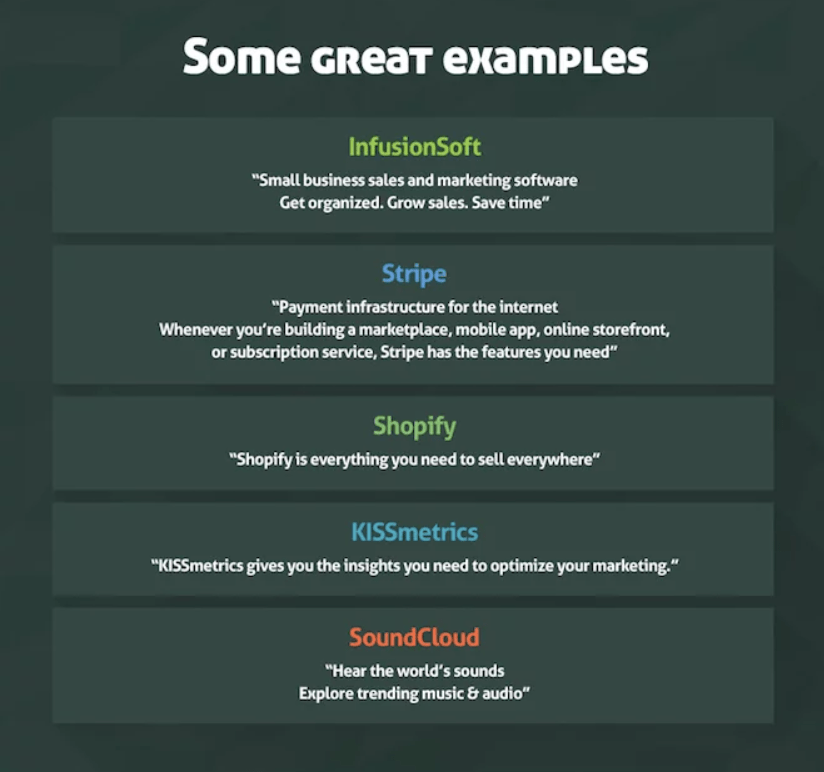Unlike B2C websites, B2B websites are not just meant to be beautiful but to be informative as well. There’s a lot more to consider than just colors and graphics to use on the website.
For B2B companies, the prospects are the decision-makers i.e. executives and managers of potential companies and you must agree that they don’t visit websites to kill their time.
They want relevant, insightful and useful information at the shortest span of time and in this blog, I’m going to share 7 best practices for B2B website designing that can convert your visitors into leads.
1. Define your brand’s value proposition.
First things first, before driving another visitor to your website and confusing them with what actually you offer – clearly define your brand’s value proposition.
According to Investopedia, a value proposition refers to the value a company promises to deliver to customers should they choose to buy their product. In other words, it is a clear statement of what the company offers and how it stands out in the market.
Having a clearly defined value proposition on the website, helps your visitors understand the offerings and they can analyze their benefits from it easily.

Always remember that in b2b, your prospective client visits your website only if they want or looking for similar product/services you are offering. So, you just have to make sure that they don’t have to search elsewhere once they land on your website.
2. Understand your customers.
Once your brand positioning is defined, you need to know your customers as well.
Your website is for your customers and in order to turn your visitors into customers, you should focus on providing the information they want to know about your products, services and most importantly, about the company.
Since most of your visitors are executives and managers, your website should address their pain points & how you can resolve it. Every executive has their own set of questions & you’ve to make sure that they all get their answers before leaving your website.
3. Use Industry Terminology.
In b2b, the people who are visiting your website are well aware of the business they are into and services they are looking for. So, the way you present your content on the website doesn’t have to be simplified like it’s for the general public.
Moreover, using industry-relevant terms adds value to the SEO of your website and thus results in more visibility on search engine result pages. So, feel free to use complex industry terminology on your website.
4. Provide useful content.
Your website job is to be informative to your visitors about everything they want to know about the company, product and services you offer. So, make sure that there is all the useful content your visitors might want to learn about.
Additionally, create high-quality content (blogs) related to the industry you’re into. For example, if your company operates in the marketing industry, share insights and opinions on market updates.
Doing this won’t only help you build credibility and trust with prospects but will also help you stand out among others as a thought leader in the industry. Also, high-quality content can help the website earn quality inbound links and organic traffic which in turn boosts search engine ranking for the website.
5. Be strategic to CTA placement for lead generation
The visitors on your website won’t share their information unless you guide them through a strategic channel. Also, you have to understand that no one likes to share their contact information if they are afraid of being spammed or data misuse.
In recent times, it is quite a matter of concern for everyone available on the internet. So, your CTA has to be convincing enough to win their trust for sharing information and make sure they would not be spammed afterward.
One of the best ways to generate leads through the website is by proving gated contents – the type of content which can only be accessed after logging in or filling out a form. The contents like ebooks, case studies, whitepapers, webinars, etc. are some of the best examples for which visitors would share their information willingly.
Wrapping Up.
It doesn’t matter if the website is for B2B or B2C company, the message you want to deliver to the visitors should be clear and compelling. At the bare minimum, make sure your website includes –
- Brand’s Value Proposition
- Services and Products detailed description
- Quality content
- Contact information
- Testimonials
In B2B, the website doesn’t have to be complex but it must be impactful, accessible and most importantly – informative to your prospects.
Now, if you find this blog informative and helpful, share it with your colleagues and fellow professionals and share your thoughts in the comments below.
